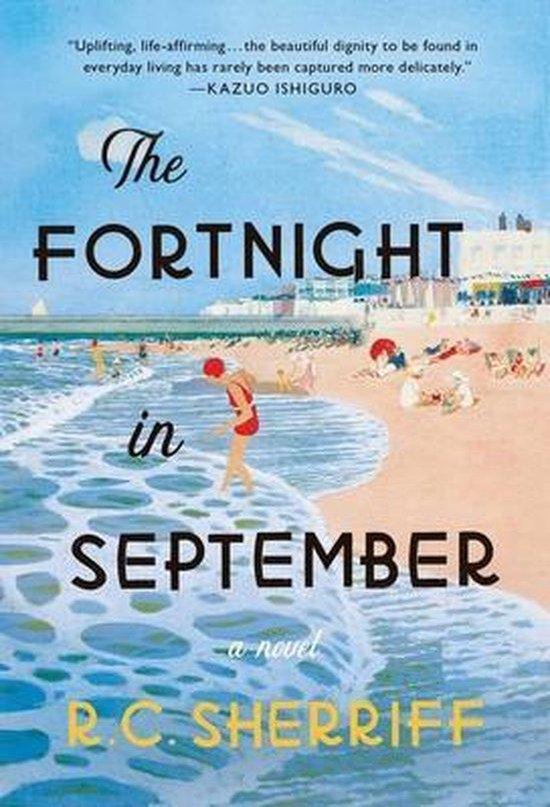
The Fortnight in September
The Fortnight in September by RC Sherriff was published in September 1931. It was glowingly reviewed: 'A lovely novel,' declared the Daily Telegraph , 'a little masterpiece' wrote the Sunday Express . In America, the Saturday Review of Literature thought that 'nothing since Dickens has come closer to giving between covers the intrinsic spirit of England.' The Spectator reviewer said: 'There is more simple human goodness and understanding in this book than in anything I have read for years...Once more, the author of Journey's End has enriched our lives.' Journey's End (1929) is one of the great stage plays. Set during the First World War, it had no women in it, no heroes and no love interest - it was about the hopes and fears of a group of ordinary men waiting in a dug-out for an attack to begin. It was based on Sherriff's own letters home, and its success was in part due to his ability to recreate the trench experience exactly as he had lived it. The Fortnight in September , written two years after Journey's End , shares its emphasis on real people leading real lives. But the atmosphere could not be more different, embodying as it does the kind of mundane normality the men in the dug-out longed for - domestic life at 22 Corunna Road in Dulwich, the train journey via Clapham Junction to the south coast, the two weeks living in lodgings and going to the beach every day. The family's only regret is leaving their garden where, we can imagine, because it is September the dahlias are at their fiery best (hence the endpaper): as they flash past in the train they get a glimpse of their back garden, where 'a shaft of sunlight fell through the side passage and lit up the clump of white asters by the apple tree.' This was what the First World War soldier longed for; this, he imagined, was what he was fighting for and would return to (as in fact Sherriff did).He had had the idea for his novel at Bognor Regis (as in Journey's End , and The Hopkins Manuscript , Persephone Book No. 57, the physical setting is wonderfully evoked): watching the crowds go by, and wondering what their lives were like at home, he 'began to feel the itch to take one of those families at random and build up an imaginary story of their annual holiday by the sea...I wanted to write about simple, uncomplicated people doing normal things. 'Sherriff adds, in his memoir No Leading Lady (a few pages of which is reprinted at the beginning of the book): 'The story was a simple one: a small suburban family on their annual fortnight's holiday at Bognor: man and wife, a grown-up daughter working for a dressmaker, a son just started in a London office, and a younger boy still at school. It was a day-by-day account of their holiday from their last evening at home until the day they packed their bags for their return; how they came out of their shabby boarding house every morning and went down to the sea; how the father found hope for the future in his brief freedom from his humdrum work; how the children found romance and adventure; how the mother, scared of the sea, tried to make the others think she was enjoying it.' The Fortnight in September was a very brave book to write because it was not obviously 'about' anything except the 'drama of the undramatic'. And yet the greatness of the novel is that it is about each one of us: all of human life is here in the seemingly simple description of the family's annual holiday in Bognor. This is a book which fits fairly and squarely on the Persephone list.
| Auteur | | R C Sherriff |
| Taal | | Engels |
| Type | | Paperback |
| Categorie | | Literatuur & Romans |




